-
Posts
926 -
Joined
-
Last visited
Content Type
Profiles
Forums
Events
Posts posted by Function
-
-
I was just thinking about how to avoid death in AIDS.... I thought of an idea....we know that ADA can be treated by using recombinant DNA techniques..... so what if we go to the sourse of the production of leucocytes... the bone marrow.... can't we make artificial bone marrow with recombinant DNA..... using the same technique can't we transfer the function of T-lymphocyte and neutrophil(which is 60-65% of wbc's ) and then do a bone marrow transfer as done in leukaemia....of the artificially made bone marrow... so even though our T helper cells die... our antibodies keep on producing lowering the risk of other diseases..and thus avoiding death maybe....it's just an idea. I don't know that if there is enough technology to do it. Or if we can try to just change the glycoprotein I.e CD of our T-lymphocyte so that HIV can't cause any infection ?
We can't change the CD4 (which I guess you are aiming at) in our T lympho's, since then they simply won't work as desired anymore.
The way HIV infects and destroys CD4-positive T-lymphocytes is by their CCR5-receptor.
If you find a way to modify T-cell stem cells to lose their CCR5, be my guest. Fun fact: around 1% of the total population is naturally CCR5-negative, so they won't be able to develop aids from HIV.
0 -
Will it act like a pendulum?
0 -
So in order to find the correct amount of time, you'd have to integrate g' twice for dt?
0 -
I would've gotten that far, but what about the time element.
studiot, I wasn't going to "abandon thread", but I'm having a 4-day internship so I'm short on time

Basically I got the same formula in a similar way by using Newton's F = G*m*m'/r² = m' * a so a = G*m/r²
0 -
There are often two streams. Typically both have similar or the same core curriculum, but differ in their electives. The BS tend to be more concentrated and has more connections with e.g. neuroscience. The BA tends to be broader and less geared toward psychological research but can be a side aspect in other disciplines (e,g, marketing).
Neuroscience ftw
 0
0 -
The vast majority of people won't listen until it happens to them.
Yeah, I'm one o' those
0 -
Pity you are getting closer.
I'd have to know first if an object is indeed at all times attracted towards the same initial centre of mass?
0 -
A little mechanical analysis (you only need high school mechanics for this) will answer these side questions en route to the answer to the original question.
I have some fundamental questions regarding the gravitational acceleration ... It cannot be constant, can it? The deeper the ball rolls, the smaller the mass causing the ball to roll towards the centre of the earth and the larger the mass causing the ball to be attracted to the opposite direction. According to Newtonian gravity, that is.
So it'd be necessary to
- Determine, in function of the distance the ball has been rolling from A to B, the mass of the part of the earth "below" a line cutting the earth, perpendicular to the line connecting the ball and the centre of the earth
- Determine, in function of the distance the ball has been rolling from A to B, the mass of the part of the earth "above" a line cutting the earth, perpendicular to the line connecting the ball and the centre of the earth
Unless ... A projectile piercing through a body is still attracted to the centre of the whole body and not its individual parts ...
Which sould be the case, no? So my drawing is not correct.
Why is it incorrect? I think it's incorrect because, if you'd place an expandable, flexible, heat-resistant point at the centre of the earth, it will not expand (let's neglect heat causing expansion), correct? It will just float in place in the centre, right? On the other hand, one should ask himself the question that if indeed an expandable point would be the subject of an infinite amount of forces, defined by the gravitational forces of each time 2 half Earths and their respective centres of mass, defined by planes through the point, in all possible directions, it would either expand until it reaches the centres of gravity of all of these infinite amount of half Earths due to forces stretching it out in a sphere-like manner, or be at rest due to a net null force.
Does this even make sense to anyone here? Is it clear what I mean?
Basically the picture below is what I mean, but only in 2D, so in one plane. Imagine an infinite amount of these "half earths", defined by an infinite amound of 'parasaggital' planes through the centre and thus, an infinite amount of radial gravitational force vectors pulling the centre point to their respective centre of mass. So we have the earth, then we would have another sphere defined by the centres of mass of all half earths, and another sphere defined by the vectors defined by the gravitational force of each half earth on the point in the centre of the earth.
I simply guess this is not how it works?
Well ... This is too hard for me. Good luck, guys!
0 -
1) 42.5 minutes actually, Douglas Adams got it slightly wrong.

2) That is the question of the puzzle.
Well then, no time to lose! Let's build a computer that will provide us the correct question in some million years.
But now for the real question: did the honourable Lewis Carroll really use feet and miles?
On a second thought ... It cannot really be 42.5 minutes for all points A and B, can it? What if the distance between A and B is smaller? What if it becomes larger?
0 -
Interestingly the answer is the same as the key question in the Hitchikers Guide to the Galaxy.

42 what?
How would that be?
0 -
This one is a version of a problem due to Lewis Carrol, hence the thread title.
A and B are two points on the surface of the Earth which are connected by a straight tunnel.
Both A and B are on the same side of the centre of the Earth.
Alice rolls a ball into the tunnel at A.
How long will it take the ball to reach B, neglecting frictional resistances?
Take the radius of the Earth as 4000miles and g = 32 ft/sc2
Are you insinuating that the line connecting A and B is the diametre of the Earth? If so, Alice's buddy at the end of the tunnel will have better things to do than to wait for her ball to reach him.
If not, the same applies and the ball will most likely stop at a point which correlates with the perpendicular projection of the centre of the Earth on the line connecting A and B.
Basically, this is what I think ...
Knowing the honourable Lewis Carrol, this must be a trick question. It's a matter of perspective, though: the only thing moving the ball would be gravity and perhaps a femalish push (no sexism pun intended).
So imagine the ball rolling towards the Aussie guy. If we watch the world from his perspective, the ball can roll down again towards Alice.
Of course, this can't keep going on so that's why the ball must stop at the centre of A-B.
So this is the cycle of the ball:
If even those last 3 occur? I think image 4 (alice4) can still happen due to momentum? alice5 and alice6 would be a bit overkill, I think. If alice6 would be able to exist, then you should imagine being the Aussie. And suddenly, a ball would jump from a hole into the air. Which is very unlikely.
I think.
0 -
(...) But she'd never lie to me (...) I'm kind of the only reason she's alive (...) she used to cut and she has like next to no friends and she's constantly severely bullied at school (...)
That information immediately rules out some things but is very suggestive for other serious problems. None of which directly correlates to an ophthalmic pathology.
Medical advice from non-professionals impending pleads in favour of a lockdown of the topic.
OP, I'm very sure she's not willingly lying to you. But we must really consider the idea of her problem being a shout for attention or help, rather than a genuine somatic problem. I'm not going to give any medical opinion or advice, which is the only way to help her in the future. The story didn't add up, but your last message (isolation, the absence of a decent social safety net and other signs that might indicate a psychiatric problem) solves a lot of unsolved questions - or, at least, gives an indication of possible answers. It's not your fault, but you are not able to evaluate her both physically and mentally from where you are sitting (don't take this personally, but no one from your age is able to do so, let alone without any decent medical or health professional background), so I suggest that you remain open to possible alternative problems here, rather than the actual physical (ophthalmic) problem you cite.
Only thing I can say is that a psychiatric problem might be at the base of the problems that are cited in this topic and that the girl in question is advised through the OP to consult her general practitioner or a psychiatrist with the problems she's struggling with.
A last advice to the OP: I'm not saying that she's unstable, because I don't know her whatsoever. But if ever you get a serious feeling that there's an emergency situation impening, regarding her mental status, and you might get any indication that she's possibly going to hurt herself, please call your local help services and give them information about her whereabouts.
That being said, I think I just crossed the line for medical advice myself, for which my apologies, but I really see no indications to leave this topic open.
0 -
Neither of us know because she said she went there and they had her unconscious when they did whatever they did but that her eyes were a bit sore and blurry afterwards, and in reply to the others and to you in case you think me or her are trolling; no we're not, there's literally no point in doing that. And she does see a bit better now. I think she's seeing a bit more shades of blue if not all (she said light blue is light purple which I think she just thinks it looks more purple) and she's seeing yellow and green properly now.
"Neither of us know"
Then she either has been operated by some crazy maffioso (because really, any doctor these days is bound to informed consent), or either she's genuinely trolling you and you need to start opening your own eyes. I'm sorry to tell you but there's no such thing as some sort of surgery which can "fix" a color inversion sight, if that even exists in the way you have described it.
Since the problem is alledgedly solved and we're getting no where further with this thread, I suggest that it be locked. OP is not able to give us evidence-based approaches for the problem and is in my opinion not flexible enough to consider multiple possibilities that are more probably lying at the base of the problem he is reaching out for.
0 -
Are you derpin' us, Derps?
If she didn't chronically swallow large doses of sildenafil (Viagra) and got her vision turned all bluish and just guessed the colours wrong, I think you're genuinely trolling us. Or she is.
0 -
In common usage variables are italicized to distinguish them from regular abbreviations.
Well, that's that. Solves my question. Thanks!
0 -
Hello everyone
Let me be brief: APA guidelines report most statistics (all except for the confidence interval, CI) in italics: mean M, standard deviation SD, p value p, t, ...
So what if I introduce my "own" statistics with their abbreviations, following these guidelines? Would I also put them in italics?
E.g. gross tumoural volume, GTV or GTV? Tumour-to-brain ratio, TBR or TBR? Positive likelihood ratio, LR+ or LR+? Sensitivity, SN or SN? ... ?
I know contents are more important, but aesthetics (and consistency and corectness of layout) of a document/book/thesis have major implications on the way I do or do not enjoy reading it.
Thanks!
Function
0 -
It is next to impossible to prove experimentally that anything is zero. We have shown in a lab that the mass is less that 10^-13eV/c^2 and via observations of galatic magnetic fields that the mass should be less than 10-27 eV/c^2. But you cannot prove a zero - because there are always experimental imprecisions and errors; this will lead to error bars and your figure could lurk in the error bars.
Theoretically big portions of modern physics would fail - quantum chromo/electro-dynamics would fall over and no longer be re-normalisable and thus no longer give the astonishingly accurate results that it does.
But it is accepted that it has zero mass? Or is there a consensus for an infinitesimal small mass?
0 -
I am no physicist at all, and I know nothing about the deep fundamental theorems aimed at in this thread. But I've understood that indeed, waves are massless. Is that consensus? Or has it truly been proven that photons are massless?
0 -
Compliance seems rather a challenge of phase 3 and 4 studies; to a lesser degree phase 2.
Bioavailability, plasma half-life would seem phase 2 to me, and side-effects actually phase 1 or 2: some side-effects may already be observed in a preclinical phase in laboratory animals.
Efficacy is typically phase 3, whereas efficiency (cost-effectiveness) applies to phase 4 studies ...
Of course, the degree to which you may or may not extrapolate your results is a huge problem in phase 2 and 3 studies.
0 -
6 th please!
Pardon me? This isn't a Q&A
House rules dictate you must show us what work you've done yourself already in order to solve the problem ...DrK was very generous in already giving you some hints etc. so you might just skip that.
Anyway, just noting that in the future, you might just want to show us what you know on the subject and on the specific problem. We don't know what your strengths/weaknesses are and if we don't know these, we can't form a "personal fitted" answer.
0 -
She's my girlfriend.
.
..
...
She never lied to me and I'm not naive for not thinking that she's playing me because she isn't and I know this as a fact and with proof. She has spoken English her whole life. What she sees isn't changing. It stays at her seeing yellow as green and green as yellow. But I think, according to her, she sees very light shades of yellow and green properly, as I showed above (yellow shades). And just because you don't know of something like this existing doesn't mean it can't. Things exist people don't even know about yet, or many anyway. I just want to know how to fix what she sees and what it is that is causing this.
And if she was seeing properly but was miseducated in the names of colors, why would she say Frisk's skin tone looks nothing like a (white) human skin tone, but instead, green? I tested her many times with color blind tests and testing what she sees myself by showing her different shades and colors and asking what she sees (she doesn't see much difference in a few shades of blue, too).
You see, I have no problem at all with age; even when a five-year old were to come here with some statements I'd be delighted to listen to them and think about them.
We've put a lot of thought in this matter, but it seems as if we're all missing the point here. If she were to be miseducated (a serious problem), then there's no way you could tell whether she genuinely is seeing the colours swapped, or she's just giving them other names and refusing to call them by their proper name.
So when she looks at the sun, she says its green? There's nothing wrong with my eyes, but I wouldn't even call it yellow, rather white, when staring into it (just don't do this for a respectable time), which would imply that she's even mistaking white for green. And then you've got to be kidding us and she just has no red or blue cones. Which is not the case.
If you genuinely feel like there's something new, bizarre, going on here, since this forum is based on evidence, and there doesn't seem to be proper evidence (yet) on the problem you describe here, I suggest you take her to a neurologist or a neuro-ophthalmologist. At least someone with a good sense of neuroscience. If you don't feel like taking that step, I feel like you're messing with us and this is a call for attention rather than a call for help, because truly, we can't help you or her whatsoever. Even more, we aren't allowed to (house rules).
Here's another image. It's a package of an antihistaminicum I take. As you can see, it has a gradient from full yellow to lighter, faded yellow. As stated by you before, she should see lighter shades of yellow correctly and darker/brighter shades as green. Could you present to her this image and ask her exactly on which point she sees a transition from green (left) to yellow (right)? Is it a transitional field, gradually transitioning from green to yellow, or is the transition rather abrupt?
If it's an abrupt transition, ask her on which letter, for instance, the transition is located (e.g. "the ®" from "Cetirizine EG®").
If it's not abrupt, but rather a gradual transition, ask her on which point she'd define according to her subjective interpretation, her point of transition from green to yellow.
0 -
Whatever lies at the bottom of this intrigues me: either neuro-ophthalmology, psychology or a prank that has been going on for a bit too long for what it's worth.
I'm going for one of the last 2 options.
Subscribing to this post

By the way, if she really said the gray-greenish-blackish-whateverkindofcolour top of the hat is brighter than the flashy yellow part of the hat, then it doesn't seem like a green-yellow colour swap to me and it seems like their parents most surely did have a great fun time of mis-educating her - if that would be the case, that'd be a serious offense to me and should be punishable by law.
But I'm not insinuating they did.
0 -
Am I the only one who finds it a problem that it's a BA and not a BS? In Belgium, it's a BS in Psychology ...
That aside, there's tons of opportunities ... But ... I'd advise you to get a Master in Psychology, too. Why stop at a bachelor's degree? Psychology is a wonderful science and there's few other sciences that give the satisfaction psychology does when known well enough and when mastered.
But don't let me push you into something. You could indeed already start finding work, but I'm not sure if you're legally allowed to call yourself a psychologist after you get a BA? I'm not entirely sure, but my guess would be you'd have to get a master in psychology before you could be certified as a psychologist, in Belgium, that is (still, not sure).
There's lots of opportunities: you could specialise in clinical psychology, experimental psychology, ...
The old adagio goes that Google is your best friend. I think that also for this problem, you'd best Google your question a first time and come back when you have and should have more questions ...
Welcome to the Science Forums.
0 -
Give her both a yellow and a green fluorescent marker. Ask her which one is brightest ...
This is very subjective, but it seems like the only way to me to really know whether she doesn't know the name of the colours, or truly has some sort of colour swap thing going on in her brains (because really, her eyes are fine).
I think most of us would agree saying the yellow fluorescent marker is brightest, aye?
So if she says the green fluorescent marker is brighter, there's this little chance that indeed, there's some wicked spooky crazy magician stuff going on in her brains. Then consider consulting a neurologist or, indeed, a neuro-ophthalmologist.
How old is she?
0



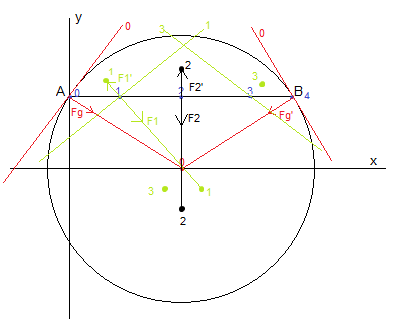
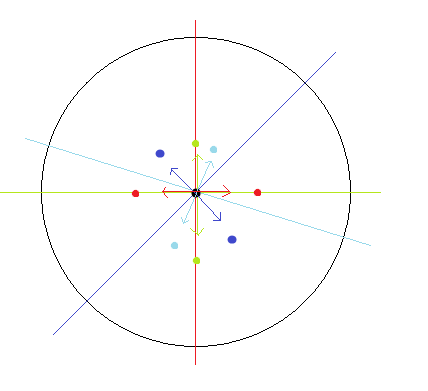
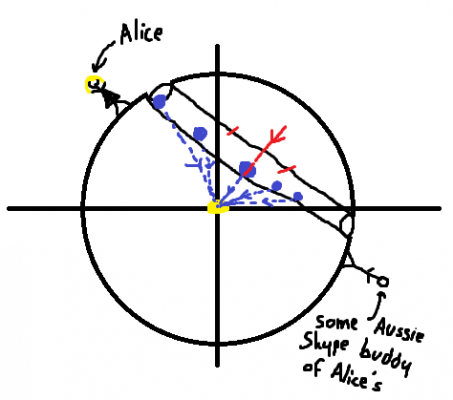
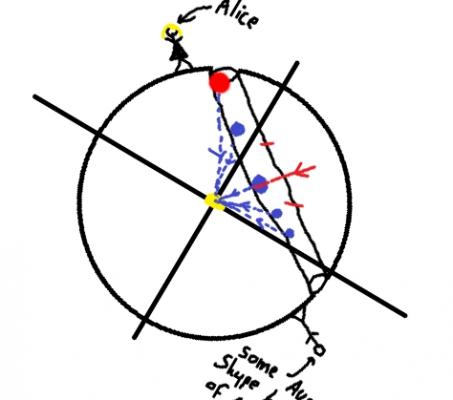
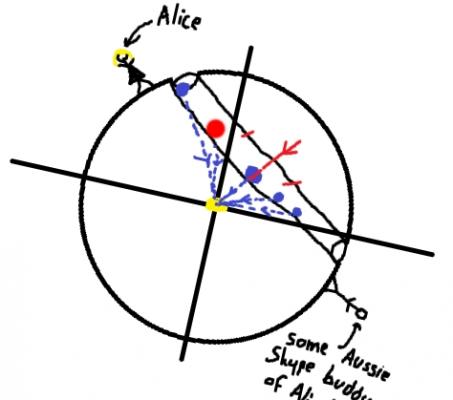
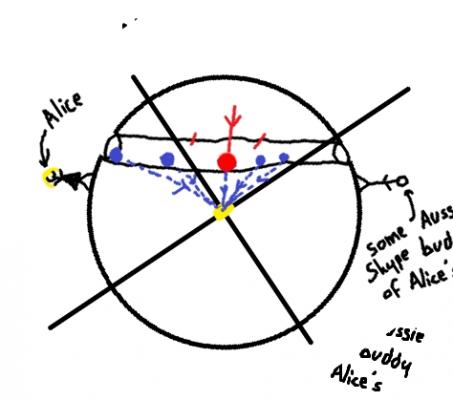
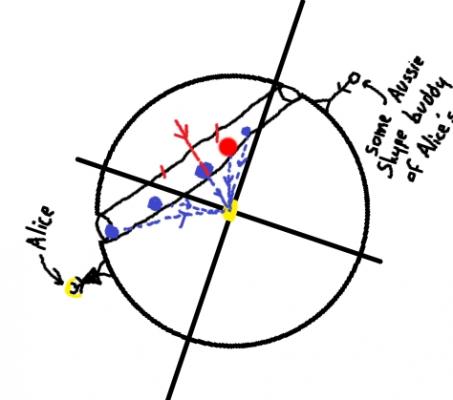
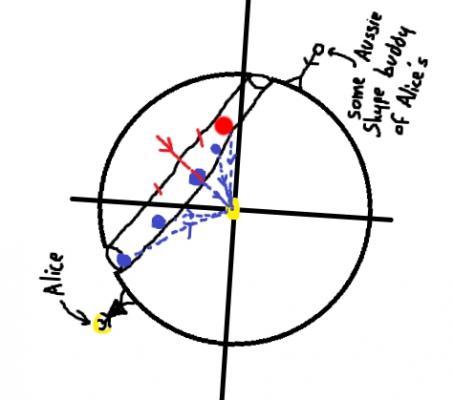
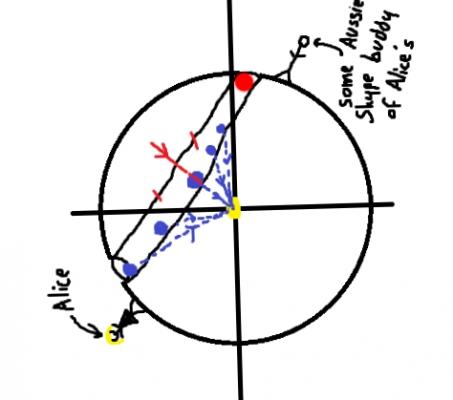

Modern diet and stress cause homosexuality?
in Psychiatry and Psychology
Posted
There's one question we have to ask ourselves in this modern society, if we're even considering the influence of "modern" factors here.
Does it even matter?
I see that the pdf attached to the op includes "Potential therapy" in its subtitle. So that's where I draw the line.